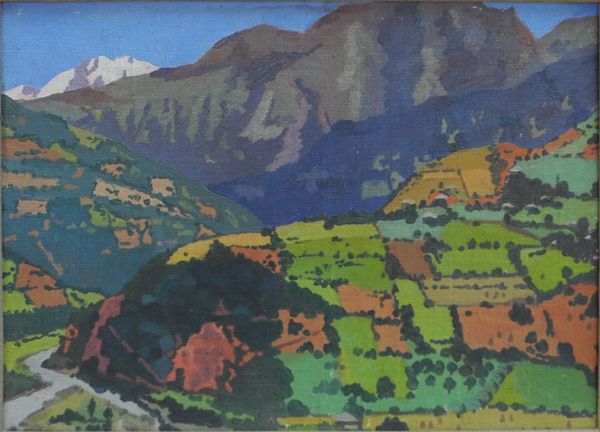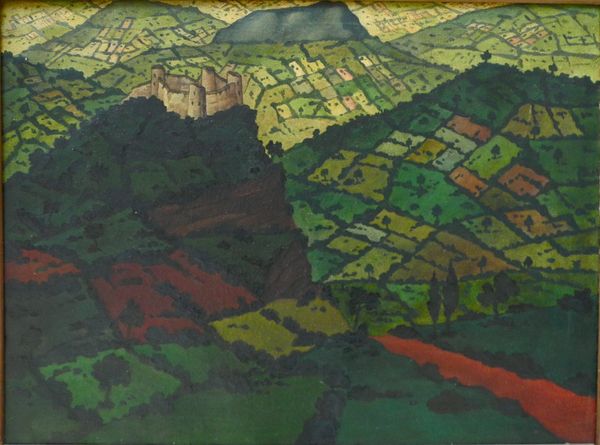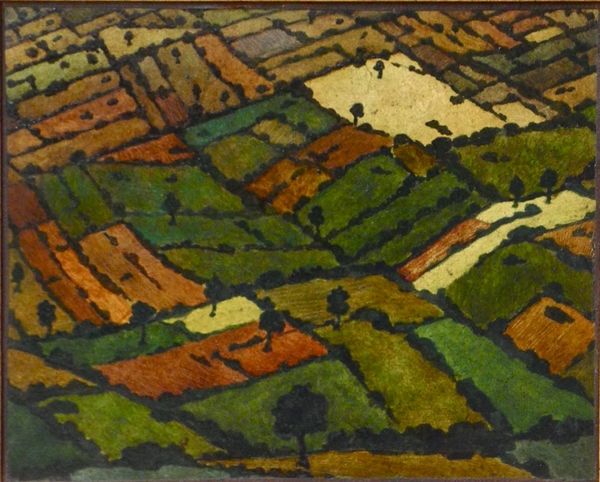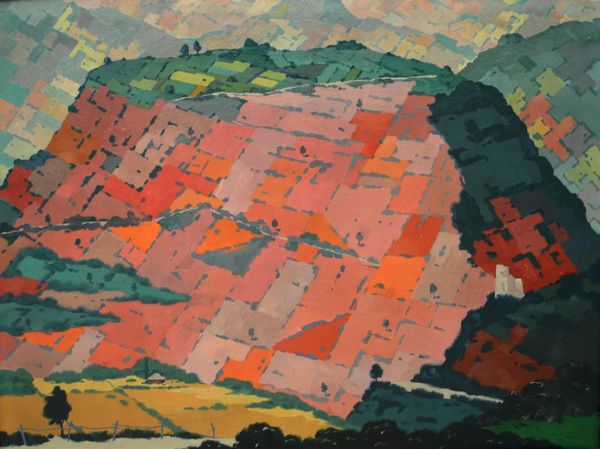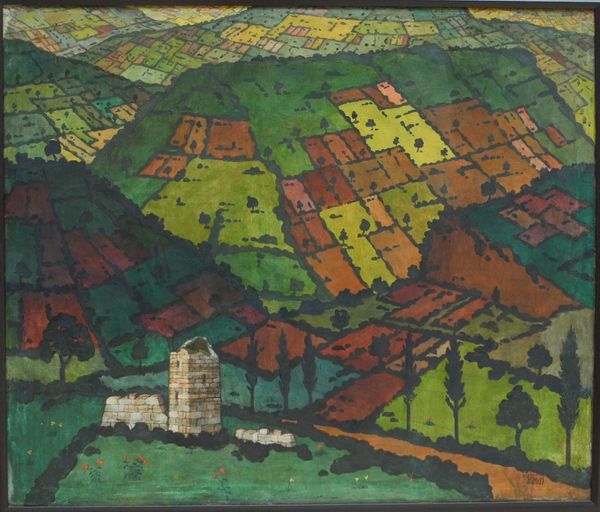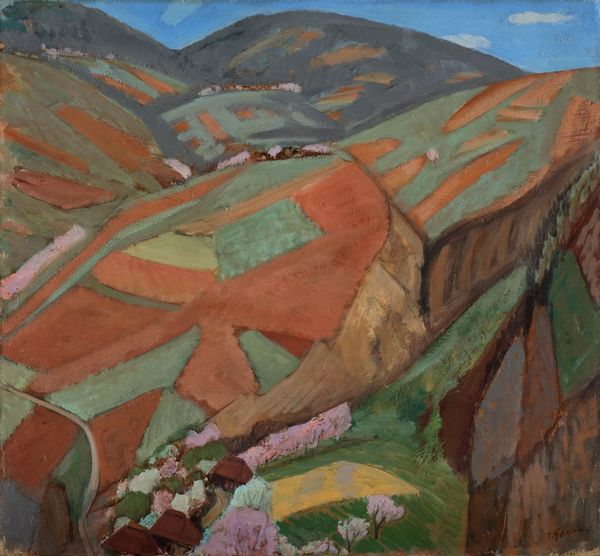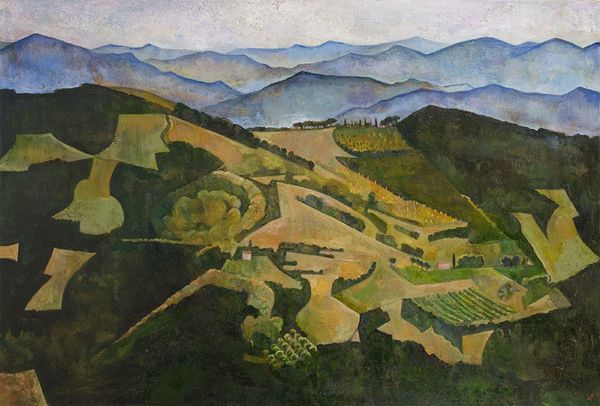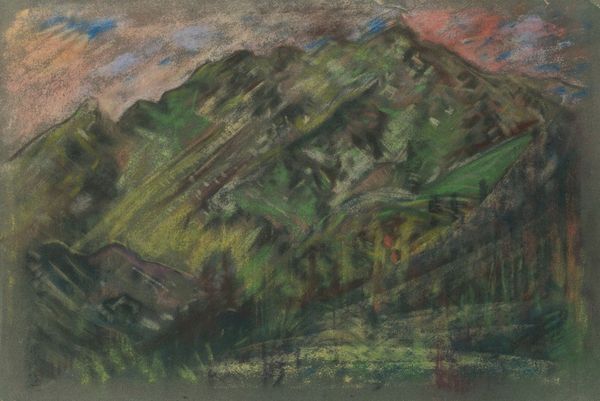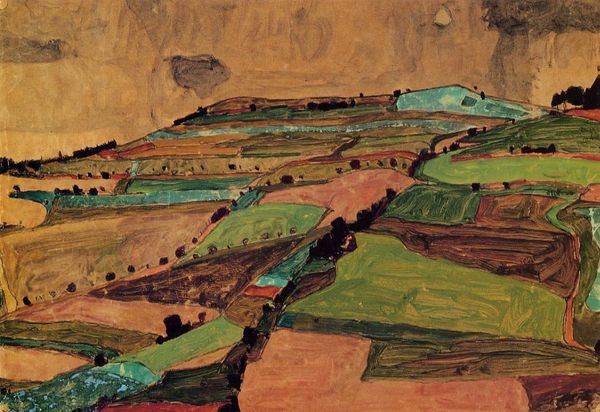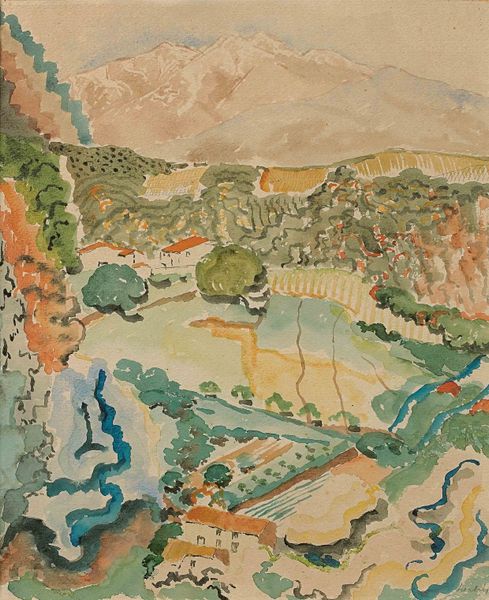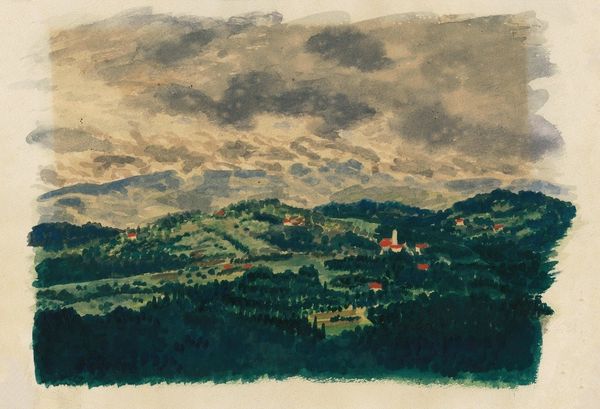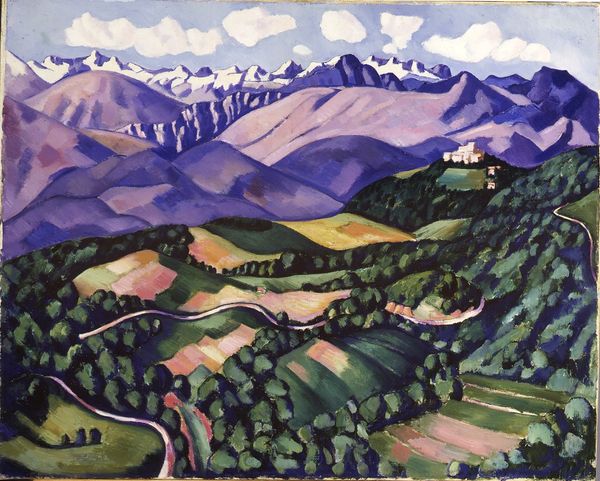
painting, oil-paint
#
painting
#
oil-paint
#
landscape
#
oil painting
#
expressionism
#
modernism
Copyright: Public domain US
David Kakabadzé’s painting, “Imereti,” captures a landscape using oil paint, likely applied with brushes of varying sizes and perhaps a palette knife. The materiality of the paint is crucial here. Notice how Kakabadzé uses distinct blocks of color. The texture isn't about mimicking nature but about the character of paint itself. The thick application suggests an interest in the physical presence of the medium. Look closely, and you'll see how the brushstrokes create a topography of their own, echoing the hills and valleys they represent. This approach – emphasizing the material quality of paint – links Kakabadzé to broader artistic trends of the early 20th century. But it also speaks to something deeper: a connection to the land and the labor that shapes it. The careful, deliberate application of paint mirrors the work of tilling fields and cultivating the earth. By focusing on the materiality and making of “Imereti,” we can appreciate how Kakabadzé elevates the everyday, intertwining art with the rhythms of rural life.
Comments
No comments
Be the first to comment and join the conversation on the ultimate creative platform.
